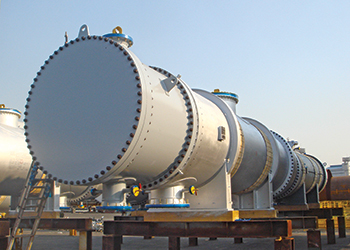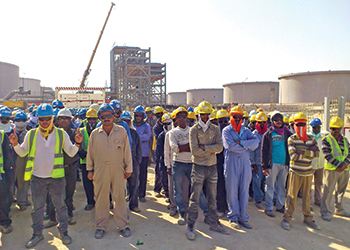
 The global heat exchanger market is highly competitive
The global heat exchanger market is highly competitive
The future of the global heat exchanger market looks promising with opportunities in the chemical, petrochemical and oil and gas applications
The global heat exchanger market is expected to grow from $12.94 billion in 2016 to $19.14 billion by 2021, at a compound annual growth rate (CAGR) of 8.2 per cent. From there on it is estimated to reach $21.3 billion by 2022 and it is forecast to grow at a CAGR of 6.1 per cent from 2017 to 2022, as per a new report.
The major drivers of growth for this market are rapid industrialisation, a rise in heating, ventilation, air conditioning, and refrigeration (HVACR) deployments, and stringent environmental regulations. Increasing power generation capacities, and rise in technological advances in heat exchangers are big contributors too, it pointed out.
Emerging trends which have a direct impact on the dynamics of the industry include development of waste heat recovery heat exchangers and introduction of exhaust gas re-circulation coolers.
According to the latest market study released by Technavio, the global heat exchanger market is expected to grow at a CAGR of more than 6 per cent during the forecast period. The growing demand for water and wastewater industry will drive the growth prospects for the global heat exchanger market until the end of 2021.
One of the major factors responsible for the market’s growth is the increasing use of heat exchangers in various plants such as water treatment plant to optimise the temperature of water and increase the energy efficiency of water treatment plant. Moreover, the growth in the global water and wastewater equipment market will create a huge demand for the heat exchanger design in the forthcoming years. It has been observed that the growing population, increased manufacturing activities, and growth in the oil and gas production will further drive the demand for water and wastewater industry, which, in turn, will propel the growth potential in the global heat exchanger market.
The global heat exchanger market is highly competitive and diversified due to the presence of a large number of regional and international vendors across the globe. It has been observed that numerous vendors are increasingly providing high-tech and highly customized products at lower prices in comparison to international vendors. However, small vendors find it increasingly difficult to compete with the existing vendors in terms of quality, features, functionalities, and services. Furthermore, with the increasing product extensions and technology, the competitive environment in the market will further intensify.
Alfa Laval, Doosan Heavy Industries & Construction, Kelvion, SPX Flow, and Xylem are the leading players in the global heat exchanger market.
Other prominent vendors in the market include Shanghai Liancheng, Funke Wärmeaustauscher Apparatebau, Hisaka Works, IHI, The Japan Steel Works, Larsen & Toubro, Lanzhou LS Heat Exchange Equipment, Ormandy, THT Heat Transfer Technology, Dover and Thermowave.
The chemical segment dominated the heat exchanger market.
Opportunities can be identified by application type (chemical, petrochemical and oil and gas, HVACR, food and beverage, power generation, paper and pulp, others), by product type (shell and tube, plate and frame, air-cooled, others), by region (North America, Europe, Asia Pacific, Rest of the World).
Shell & tube heat exchangers are the most common types of heat exchangers used globally. They are extensively used as power condensers, preheaters, oil coolers, and steam generators. They offer a relatively large ratio of heat transfer area to volume, weight, and other additional advantages making them the most commonly used heat exchanger across all industry verticals. Increased government investments on commercial building & construction projects are driving the demand of HVACR equipment which in turn drives the demand of shell & tube heat exchangers, globally.
The global heat exchanger market can be categorised into four major end user segments: Chemical; HVAC; Fuel processing; Power and Food and beverage.











































































